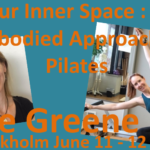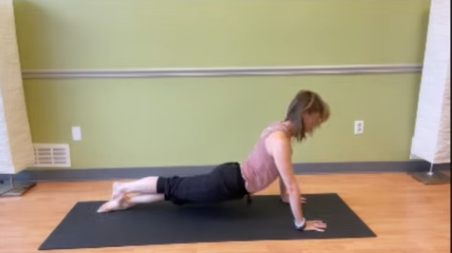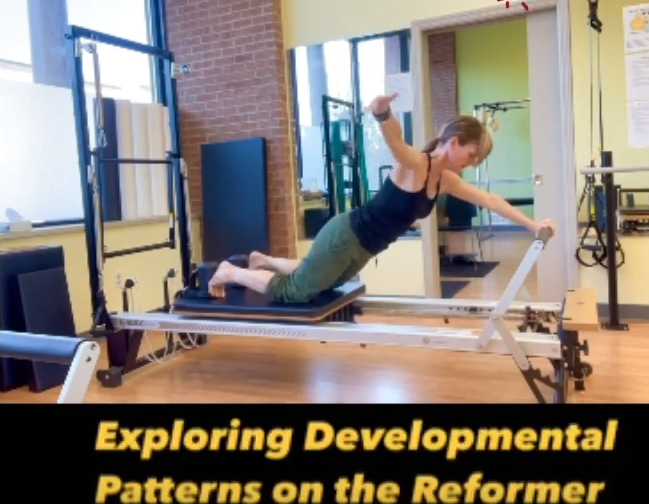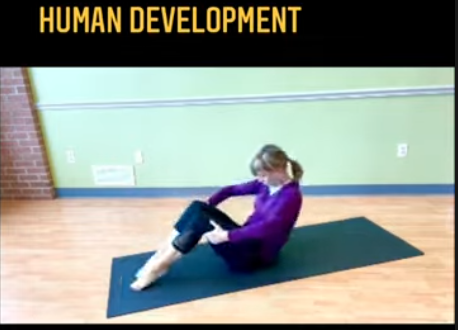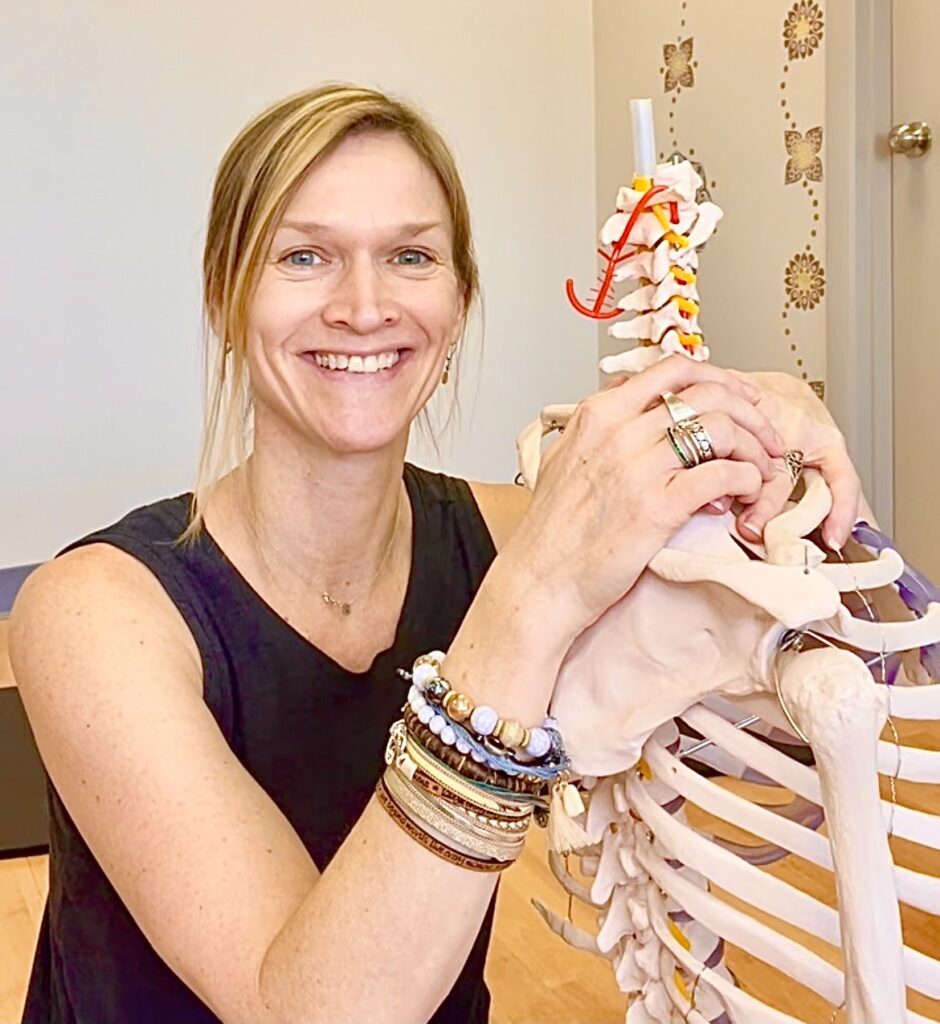Issue #365
Wednesday, April 13, 2022
An Embodied Approach to Pilates
by Allie Greene
Allie, what is an embodied approach to movement?
An embodied approach is from the “first person” perspective. This is our personal sensations, feelings, thoughts and how we experience the world – what it is like to be me. This is “I” rather than you or them. I can communicate these things to others but the experiencing of them can only be authentically felt by me. The real value is in the experience. Embodiment is the moment to moment awareness of “self.” This brings us into the awareness that we are 100% relational and in constant process within our self, with others and with our living planet.
You use the word somatic. What does that mean?
Somatics is a field within bodywork and movement studies that emphasizes our internal physical perceiving and experiencing. There are many methods, approaches and bodies of work in the field. Somatic practices can have an expansive or a more defined focus. They help us grow our awareness of not only what we are sensing and feeling but how we are perceiving this information. This is our “lived body” experience. Our body movements, sensations, perceptions, thoughts and emotions are deeply interwoven in our developmental process.
Allie, all of that is really interesting but what does this have to do with Pilates?
Joseph Pilates defined his Contrology method as “complete coordination of the body, mind and spirit.” The opening section (“The Basic Fundamentals of a Natural Physical Education”) of his book Return to Life through Contrology includes some progressive ideas for 1945. Joseph Pilates was interested in health not just physique. He expressed concern over the too fast “pattern of life” which is reflected in “our manner of standing, walking, sitting, eating, and even talking and which results in our nerves ‘being on edge’.” Joseph Pilates wanted people to have more awareness of what they were doing not only in their Pilates practice but in their everyday life. He wanted them to be more present in their body which would ease their mind and elevate their spirit.
For me, what I practice and teach is simply a continuation of this. The way I am deepening this journey towards greater self-awareness and self-agency is through a developmental lens. All of our movement is an expression of self. We can, and oh boy do we, dissect it into a bio-mechanical view of the body. This is prevalent and popular, which makes sense as it fits the dualistic educational model most of us are raised in. But it comes at a cost of us never really knowing ourselves. We think we know. It’s the difference between reading about some place you would love to visit versus traveling there and immersing yourself in it. We value naming things rather than feeling things. We value performance over process. We value quantitative over qualitative. I want to stress that I am not saying that any of those things are not important. I am saying we need more balance in what we value. I think the pandemic really exposed that.
A Pilates class is the perfect setting to invite more of this balance in. To connect more deeply with our body. We are already there trying to do just that!
My personal toolbox includes somatic practices, experiential learning, developmental sequencing, and embodied anatomy. I think people can have the idea that “this isn’t Pilates”. What I would love for people to understand is that all movement is born out of our embryological beginnings and our developmental patterns. I’m not trying to replace Pilates. I’m adding more experience of self while practicing Pilates. I deeply value the methodology of Pilates and yes, I am one of those people who wonder what Joseph himself may have dived into had he the knowledge we do now. Since 1945, we have become more disconnected and numb to our bodies. Through this embodied lens, I experienced more of myself than I thought possible. I began to weave that into my Pilates practice. The outcome was a newfound sense of support and ease from a deep inner knowing. This is the language of the body. Our natural intelligence.
It has been incredible to watch clients transform. Not into something else but back into themselves. I have been in awe of the personal transformations that happen, starting with my own. This way of experiential learning fosters independence, confidence, and curiosity. This is the shift where the teacher is the guide, and the student is their own teacher.
What I wrote above bears repeating, and contemplating – exploring and experiencing movement from a developmental lens hands us back our humanness. We are not hinges, levers, contractions and super specifics. We are responsive, sensory driven, embryologically and developmentally organized. This is why I have deepened into an “embodied approach to movement”.
This process-oriented approach is full of joy and possibility. When we are willing to learn and grow we begin to realize how much more there is to know!
Side Note: The video I did is a variety of Pilates inspired exercises where I am interweaving developmental patterns, and which grows deep coordination and integration. However, the backbone of what I teach in a Pilates class are the Pilates exercises. The somatic language and embodied anatomy I mostly communicate with would be considered different than the more traditional muscular cueing or more directed teaching.
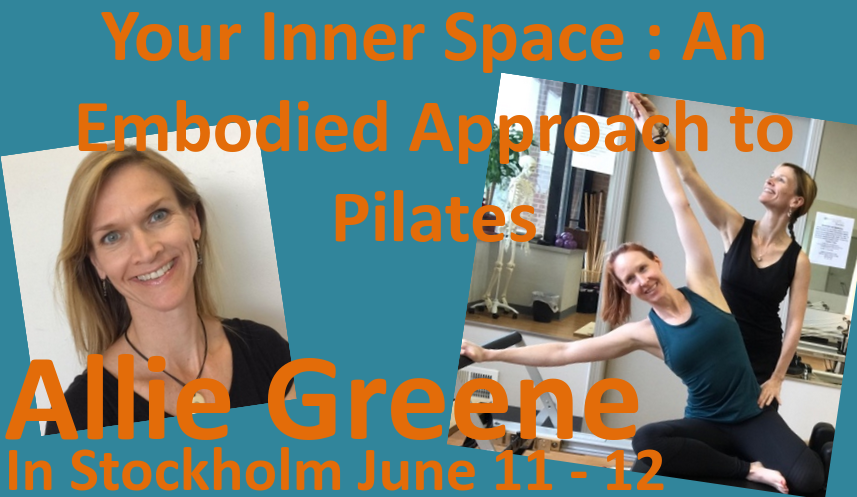
Allie Greene
Allie Greene is a Pilates, Yoga and Somatic Movement Educator. She is the owner of Equilibrium Pittsburgh Movement Studio and Soma Movement LLC.
Her offerings are a whole person, process -oriented approach that guide students through movement practices that honor human motion and development.
She is a NCPT, and is a 500RYT with EmbodiYoga and Somatics®. Additional education includes Applied Polyvagal Theory in Therapeutic Yoga, Pink Ribbon Program, Pilates for Neurological Conditions, and continued study of BMC® with her teacher Lisa Clark and Bonnie Bainbridge Cohen.
She danced professionally with the Cleveland San Jose Ballet, Laboratory Dance Company, and as a guest artist nationally.
In 2000 she earned her BA in Sociology and Performing Arts from La Roche University. She was an outreach artist in the Pittsburgh city school system, worked with children on the autism spectrum and other special needs. She also developed programming for youth in various settings including after school programs and detention facilities. She has always incorporated movement in her work and has witnessed the power of physical self-expression again and again. In 2013 she left these positions to open her own studio.
Her mission is to share movement as a means of building confidence, better health, and a sense of wholeness. Her teaching style invites self-compassion, curiosity, and empowerment so that a movement practice, no matter what kind, is an act of care towards oneself

